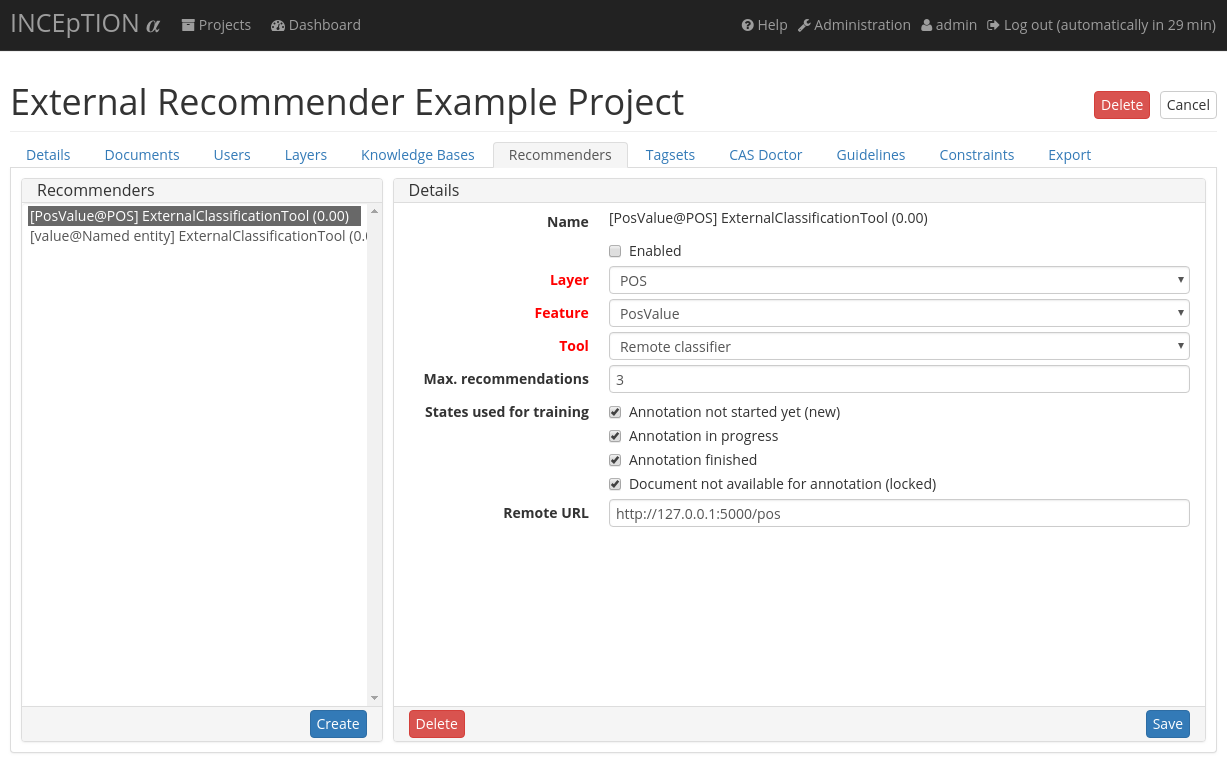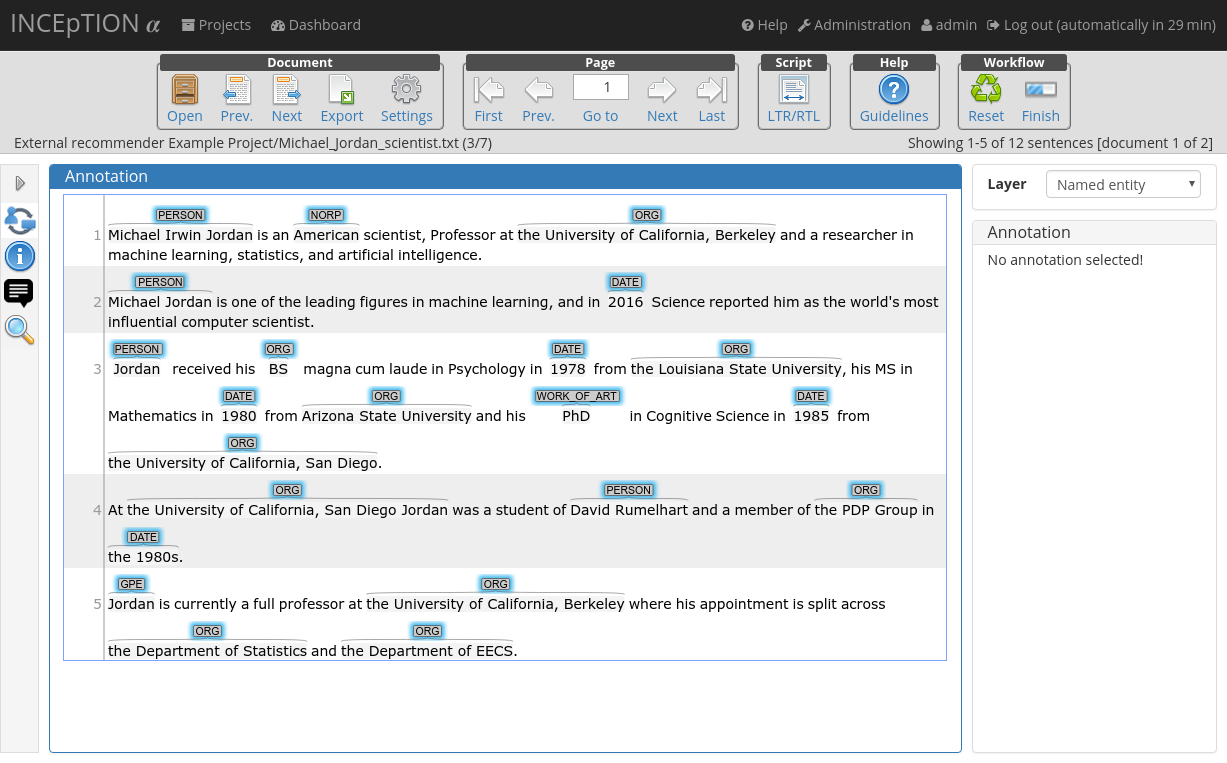External recommender
Example project
See also: Implementing an external recommender in Python - a tutorial
This example provides a ready-to-use project show-casing the use of an External Recommender in INCEpTION for annotating named entities and part-of-speech tags. Recommenders provide interactive annotation support by suggesting potential labels.
External recommenders are web services that expose a machine learning classifier over a HTTP web service. They can predict annotations for given documents and optionally be trained on new data. The external recommender support in INCEpTION allows to e.g. integrate custom classifiers written in a different programming language or to use an already pre-trained model.
The protocol used by INCEpTION to communicate with an external recommender is documented in the INCEpTION Developer Guide.
To get started with external recommenders, we provide a external recommender implementation based on spaCy that can serve as examples and as a basis for custom implementations. spaCy is an open-source software library for advanced Natural Language Processing for Python. It currently offers statistical neural network models for e.g. part-of-speech tagging, dependency parsing, named entity recognition in many different languages. The corresponding INCEpTION external recommender uses the Flask Python framework to expose POS and NER prediction. The spaCy recommender is available on Github. The GitHub repository contains documentation and an installation guide.
Example INCEpTION project
The INCEpTION project for this example contains two documents without annotations. They contain many named entities and tokens with diverse part of speech:
- Michael_Jordan_scientist.txt: A short article about Michael I. Jordan (scientist).
- Wikipedia-Obama.txt: A short excerpt from the Wikipedia page of Barack Obama.
The following recommenders are configured in this project:
- Named entity value: External recommender
- Parts-of-speech: External recommender
They are configured with a dummy remote URL and are disabled by default. In order to use them, set up an external recommender based on the spaCy recommender according to the documentation in its repository. Alternatively, you can use your own implementation.
Back in INCEpTION, go to the Project settings under the Recommender tab, enter the URL of your recommender as the remote URL and enable the recommender. Make sure to append ner or pos to the server URL, e.g. http://localhost:5000/ner. It is recommended to not enable both POS and NER at the same time, as it adds visual clutter.

When everything is configured, switch to the annotation page and open the document. After performing an action, e.g. making an annotation, the recommendations are shown above the tokens. A detailed description for using a recommender can be found in the INCEpTION user guide.
The following images show the spaCy recommender in action. The first picture shows suggestions for named entities, the second one for parts-of-speech tags.


